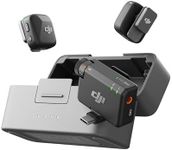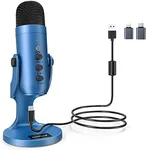Best Microphones
From leading brands and best sellers available on the web.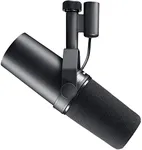
Shure
16%OFF
Shure SM7B Vocal Dynamic Microphone Broadcast, Podcast & Recording, XLR Studio Mic Music & Speech, Wide-Range Frequency, Warm & Smooth Sound, Rugged Construction, Detachable Windscreen - Black

RØDE
28%OFF
RØDE NT-USB+ Professional-Grade USB Microphone for Recording Exceptional Audio Directly to a Computer or Mobile Device , black

Shure
9%OFF
Shure MV7+ Podcast Microphone. Enhanced Audio, LED Touch Panel, USB-C & XLR Outputs, Auto Level Mode, Digital Pop Filter, Reverb Effects, Podcasting, Streaming, Recording - White

AKG
AKG C414 XLII Reference Multipattern Condenser Microphone, Highly Versatile, For Live sound and Studio installations - Black & Gold

RØDE
12%OFF
RØDE Wireless PRO Compact Wireless Microphone System with Timecode, 32-bit Float On-board Recording, 2 Lavalier Microphones and Smart Charge Case for Filmmaking and Content Creation
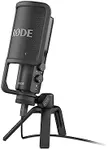
RØDE
RØDE NT-USB Versatile Studio-quality Condenser USB Microphone with Pop Filter and Tripod for Streaming, Gaming, Podcasting, Music Production, Vocal and Instrument Recording
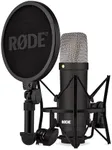
RØDE
14%OFF
RØDE NT1 Signature Series Large-diaphragm Condenser Microphone with Shock Mount, Pop Filter and XLR Cable for Music Production, Vocal Recording, Streaming and Podcasting

Sennheiser
Sennheiser MKH 416-P48U3 Shotgun Interference Tube Microphone for Film, Radio & TV | Optimised for Outdoor Use | Supercardioid/Lobe Pattern | Matte Black (001511)

Shure
14%OFF
Shure SM58-LC Cardioid Dynamic Vocal Microphone with Pneumatic Shock Mount, Spherical Mesh Grille with Built-in Pop Filter, A25D Mic Clip, Storage Bag, 3-pin XLR Connector
